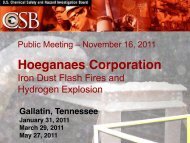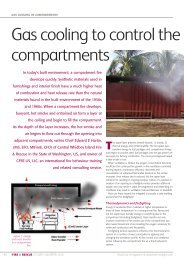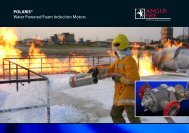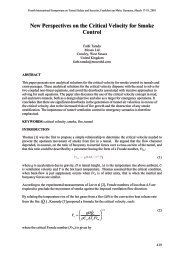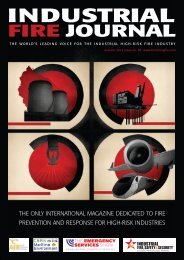fire protection of concrete structures exposed to fast fires
fire protection of concrete structures exposed to fast fires
fire protection of concrete structures exposed to fast fires
Create successful ePaper yourself
Turn your PDF publications into a flip-book with our unique Google optimized e-Paper software.
Fourth International Symposium on Tunnel Safety and Security, Frankfurt am Main, Germany, March 17-19, 2010<br />
aggregates. These aggregates are crushed rocks with a content <strong>of</strong> almost 99 % <strong>of</strong> CaO. The second<br />
<strong>concrete</strong>, that we called B40SC, is fabricated with a mix <strong>of</strong> calcareous and siliceous aggregates. These<br />
silico-calcareous aggregates are composed by alluvial semi-crushed sand and limes<strong>to</strong>ne gravels.<br />
Testing two types <strong>of</strong> aggregates allows analysing the <strong>fire</strong> behaviour <strong>of</strong> the most common <strong>concrete</strong>s<br />
that one may use in France. Moreover, previous studies have shown that the behaviour <strong>of</strong> <strong>concrete</strong> at<br />
high temperature is strongly dependant on the nature <strong>of</strong> the aggregates [13].<br />
The composition <strong>of</strong> the two types <strong>of</strong> <strong>concrete</strong>s used for the study is given in Table 2. It is in<br />
conformity with standard NF EN 206.<br />
kg Calcareous <strong>concrete</strong> Silico-calcareous <strong>concrete</strong><br />
CEM II 42.5 R cement 350 350<br />
8/12.5 calcareous gravel 330<br />
12.5/20 calcareous gravel 720<br />
4/8 silico-calcareous gravel 150<br />
8/20 silico-calcareous gravel 890<br />
0/2 sand 845 845<br />
Water 188 188<br />
Superplasticizer 4.31 5.25<br />
W / C ratio 0.54 0.54<br />
28 days Rc [MPa] 39 40<br />
Table 2. Composition <strong>of</strong> the two <strong>concrete</strong>s <strong>of</strong> the study<br />
3.3 Unloaded tests<br />
During the same <strong>fire</strong> test, both <strong>concrete</strong> types (calcareous and silico-calcareous) were tested (see<br />
Figure 3). In parallel with the thermal data collection, a video camera placed inside <strong>of</strong> the furnace was<br />
capturing all moments and brought very useful information <strong>of</strong> the moment and the way <strong>concrete</strong><br />
spalling occurred.<br />
Figure 3. The testing furnace in Promat labora<strong>to</strong>ry (left) and the design <strong>of</strong> the construction for testing (right).<br />
238



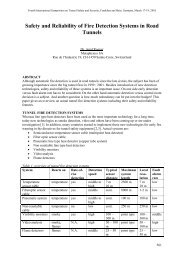
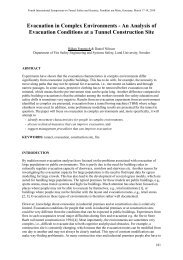
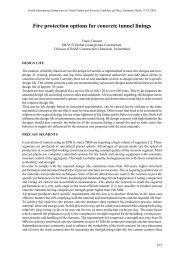
![30-37 TunnelsREV[1]rev.qxd - Industrial Fire Journal](https://img.yumpu.com/22237435/1/184x260/30-37-tunnelsrev1revqxd-industrial-fire-journal.jpg?quality=85)
